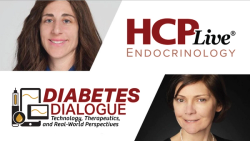
OR WAIT null SECS
Raj Chovatiya, MD, PhD: Efficacy, Safety of Secukinumab for Hidradenitis Suppurativa
In this segment of his interview, Dr. Chovatiya discussed some of the key safety data on secukinumab following the drug’s FDA approval for hidradenitis suppurativa.
In an interview with the HCPLive editorial team, Raj Chovatiya, MD, PhD, of Northwestern’s Feinberg School of Medicine, spoke on the safety and efficacy data on secukinumab following the US Food and Drug Administration’s (FDA) approval of the drug for hidradenitis suppurativa (HS).
Chovatiya answered inquiries regarding this data as well as questions about long-term use and patient access to the drug.
“In terms of the phase 3 pivotal trials, we have SUNSHINE, SUNRISE, and generally the efficacy here was looked at in terms of an endpoint of a high score of 50,” Chovatiya said. “And for those of you that are not really super familiar with that score, this was one that really originates with TNF-alpha inhibition and has kind of become the standard even though it has sort of certain drawbacks and certain advantages to it.”
Chovatiya added that for secukinumab, the efficacy was shown to be around the 40% range for improvement in lesions, and this was with 2 different versions of dosing after the loading dose.
“The placebo rates, as are often the case in HS trials, were, of course, higher than maybe we're used to in psoriasis,” Chovatiya said. “By comparison, maybe somewhere between about 25 and 30%, in terms of the placebo arm. Now the 2 trials were a little different in terms of how antibiotic use and other medications and rescue and things like that were handled, but by and large, I think that if you put it this the binary category of ‘do we have a statistically significant response,’ we do.”
Chovatiya was also asked about what dermatologists should consider with regard to long-term use and monitoring for safety and efficacy.
“Basically not much different than what we've already known for psoriasis, and many of the other rheumatologic indications,” Chovatiya said. “It's going to be important to do your baseline TB screening, but beyond that, really, most common adverse events that have been seen that are on label are not anything particularly new from what's been noted last year and in years past. So this would include things like nasopharyngitis, extracellular fungal yeast kind of infections, which we know sort of run along with the IL-17 family and some other more nonspecific infections and rates like that as well.”
Chovatiya noted the drug has a reassuring safety profile, adding that this may be similar in situations with subsequent approvals of future IL-17 inhibitors.
Later, Chovatiya was asked if there were any concerns or considerations related to patient access to secukinumab, such as insurance coverage or affordability.
“This is the real world question we always ask with any approval,” Chovatiya said. “And this one's a little different, because we've had secukinumab around with us. So it's not a new drug and we're not waiting for it to suddenly be stopped by formularies. I hopefully foresee a pretty seamless transition. We already know that there's been sort of a commitment in terms of patient access, historically, for this drug in dermatology in the case of psoriasis. While it's not necessarily the latest and greatest of psoriasis entities, I would expect much of that to really come into play here for that HS approval.”
To learn more from Chovatiya’s discussion with HCPLive, view the full interview posted above.
The quotes used in this summary were edited for the purposes of clarity.


